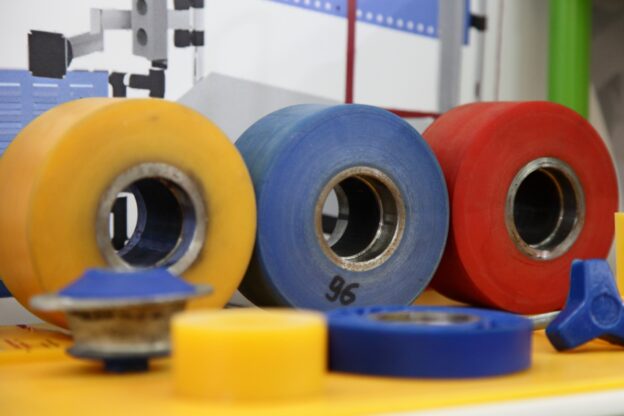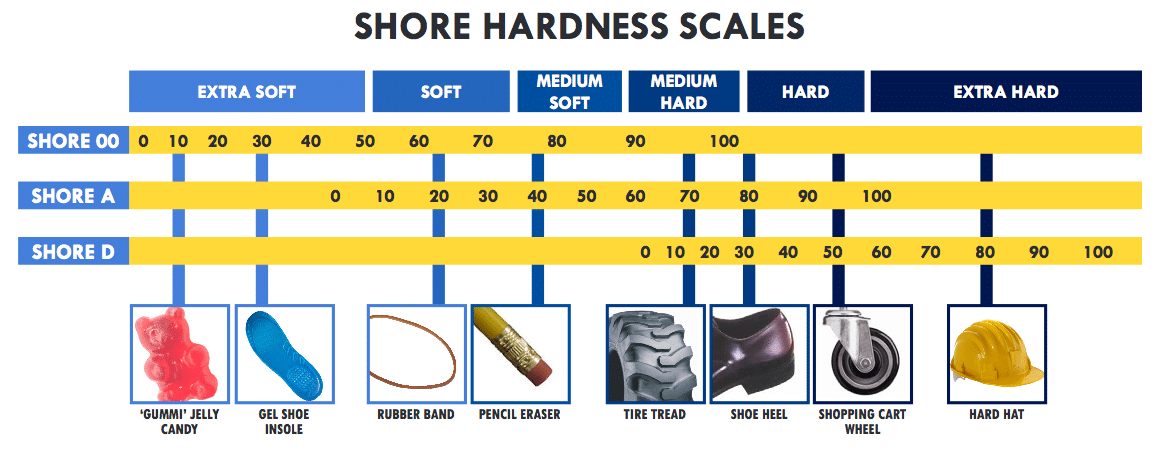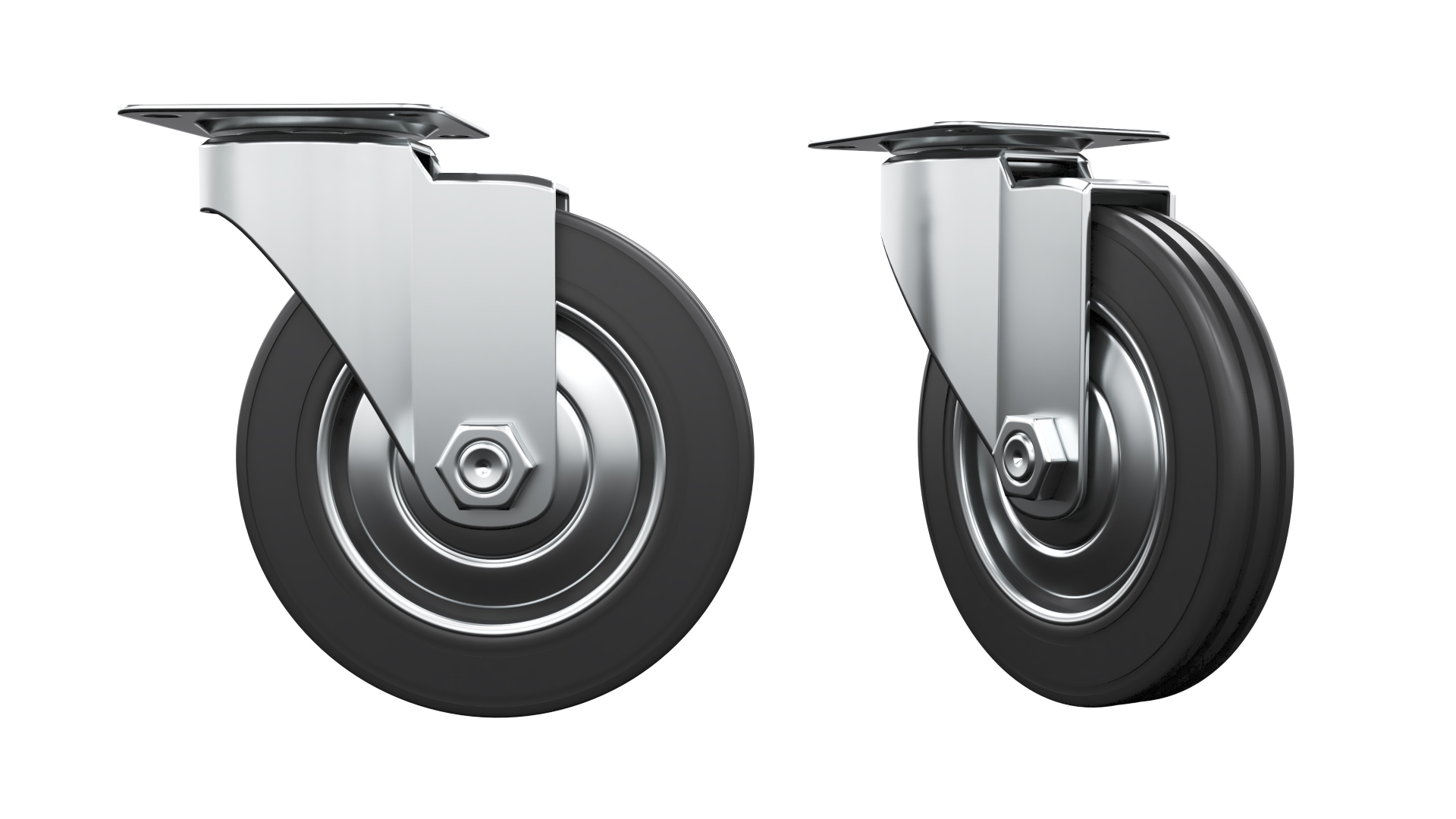Polyurethane stands out for its remarkable versatility, offering a spectrum of properties that can be finely tuned to meet the demands of virtually any application. At the core of this adaptability is the Shore Hardness scale, a measure that quantifies how resistant a material’s resistance is to indentation. This metric is pivotal for engineers and designers alike, guiding the selection process for materials that need to hit that sweet spot of performance characteristics.
Shore Hardness isn’t just a measure; it’s a gateway to understanding the inherent properties of polyurethane, from its flexibility and durability to its resistance to wear and tear. For industries ranging from automotive to consumer goods, the understanding of polyurethane shore hardness informs crucial decisions, ensuring that the end product not only performs as intended but also withstands the rigors of its application.
At Uniflex, Inc., Shore Hardness is more than a metric; it’s a foundational principle that influences our product development. By meticulously selecting the polyurethane with the appropriate Shore Hardness, we tailor solutions that precisely meet our customers’ needs, whether they’re seeking durability, flexibility, or a specific performance threshold.
👉Also Read: What is a Durometer Used For?
Understanding Shore Hardness Scales
There are several Shore Hardness scales, each designated for different types of materials. The most common scales used in polyurethane are Shore A and Shore D. Shore A is used for softer materials, while Shore D is used for harder materials.
The measurement is conducted using a device called a durometer gauge, which applies a standardized force to the material and measures its resistance to indentation. The result is a numerical value that represents the material’s hardness.
Using the Durometer Scale offers precise, reliable measurements of hardness. This precision is crucial in ensuring that materials meet the specific requirements of their intended application, leading to better product performance and longevity.
Mechanical Properties and Shore Hardness
The Shore Hardness of polyurethane directly impacts its mechanical properties, such as flexibility and load-bearing capacity. A higher Shore Hardness generally indicates a material that is more rigid and can bear more weight, which is essential for certain applications.
Shore Hardness gives us valuable information on a material’s abrasion resistance, tear strength, and compression set, among other physical properties. These measurements are vital for predicting how a material will perform in real-world applications.
Exploring Shore Hardness Ranges
The Shore Hardness scale serves as a critical guide for engineers and manufacturers, delineating the wide spectrum of material hardness from soft and flexible to hard and rigid. This hardness range is particularly relevant when dealing with polyurethane, a material prized for its versatility.
The Large Range of Shore Hardness
Polyurethane can be customized to achieve a vast array of Shore Hardness ratings, catering to a diverse set of application needs. On the lower end of the scale, soft and flexible materials exhibit lower Shore Hardness values. These materials are characterized by their ability to absorb impacts and conform to varying shapes, making them ideal for products that require a delicate balance of flexibility and strength, such as gaskets, seals, and various cushioning components.
Conversely, higher Shore Hardness ratings are indicative of hard and rigid materials. These materials are less susceptible to indentation and deformation, offering superior wear resistance and load-bearing capacity. Such characteristics are essential for components that must withstand harsh conditions without compromising their structural integrity, including industrial rollers, gears, and wear plates.
👉Also Read: Precision Engineered Conveyor Rollers: The Advantages of Urethane and Polyurethane
Finding the Right Durometer
Selecting the appropriate Shore Hardness is a nuanced process that directly impacts the functionality and longevity of the final product. It requires a thorough understanding of the material’s application, including the environmental conditions it will face and the physical demands it must endure.
For instance, consider the difference between shopping cart wheels and bowling balls. Shopping cart wheels benefit from a medium Shore Hardness that allows for flexibility, providing shopping cart wheels a smooth ride over various surfaces while still being able to support significant weight. On the other hand, bowling balls require a much higher Shore Hardness, which contributes to their durability and the precise control they offer players.
This selection process underscores the importance of matching the Shore Hardness to the specific requirements of each application. It’s not just about meeting technical specifications; it’s about optimizing performance, safety, and satisfaction in the end use of the product. At Uniflex, Inc., we excel in this precise customization, ensuring that every product we deliver, from the seemingly mundane to the critically functional, is engineered for excellence.
Applications of Shore Hardness in Everyday Objects
Shore Hardness plays a pivotal role in the design and functionality of many everyday objects, influencing everything from the comfort of your drive to the longevity of the products you use daily.
Car Tires and Round Tire Pressure Gauges
The Shore Hardness of car tires directly affects their grip, durability, and overall performance on the road. A meticulously selected Shore Hardness ensures that tires provide the optimal balance between softness for grip and hardness for wear resistance. Similarly, the Shore Hardness of the components in round tire pressure gauge ensures accuracy and durability, allowing these devices to withstand the pressures they measure without deformation.
Impact of Shore Hardness on Shock Absorbers
In shock absorbers, Shore Hardness is crucial for absorbing and dissipating energy. The right hardness level allows these components to maintain structural integrity while flexing enough to absorb impacts, providing a smoother ride and extending the lifespan of the vehicle’s suspension system.
The Role of Shore D Scale in Determining Hard Rubbers and Semi-Rigid Plastics
The Shore D scale is essential for evaluating the hardness of materials like hard rubbers and semi-rigid plastics. These materials require a high level of hardness to ensure they can handle heavy loads, resist cuts and abrasions, and maintain their shape under stress. Products made from materials with the appropriate Shore D hardness are more durable and reliable, making them suitable for a wide range of applications, from industrial machinery components to consumer goods like footwear soles and protective cases.
Understanding and applying Shore Hardness ensures that products perform as expected, enhancing safety, efficiency, and user satisfaction. It’s a testament to the unseen science that shapes our everyday experiences, from the smoothness of our ride to the reliability of the tools, materials resistance, and appliances we rely on.
Customization with Uniflex, Inc.: Meeting Specific Shore Hardness Requirements
Uniflex, Inc. stands at the forefront of custom molded urethane production, wielding unparalleled expertise in tailoring Shore Hardness to meet the exacting needs of diverse applications. Our deep understanding of Shore Hardness scales and their implications on material performance allows us to engineer solutions that precisely align with the functional requirements and longevity expectations of our clients.
Our process begins with a thorough analysis of the application for which the urethane product is intended. This insight, combined with our extensive experience, guides the customization of Shore Hardness to achieve the ideal balance of flexibility, durability, and resistance to wear and environmental factors. Whether for the automotive industry requiring tires with optimal grip and wear resistance at low temperatures or for the manufacturing sector in need of robust machinery components, Uniflex, Inc. tailors the durometer of urethane to enhance product performance across various industries.
👉Also Read: Precision Engineered Conveyor Rollers: The Advantages of Urethane and Polyurethane
Take the Next Step: Contact Uniflex Inc. for Your Custom Molded Parts Today!
If you’re in search of tailor-made urethane or rubber molding products, Uniflex Inc. offers top-notch, cost-effective custom molded parts guaranteed to fulfill your requirements. With over four decades of expertise in the field and the capability to handle design, machining, and manufacturing all in-house, our team stands prepared to facilitate swift and effective procurement of the parts you require.
Reach out to us today at (248) 560-6912 or via email at sales@uniflexinc.com to initiate the process with a complimentary quote!




